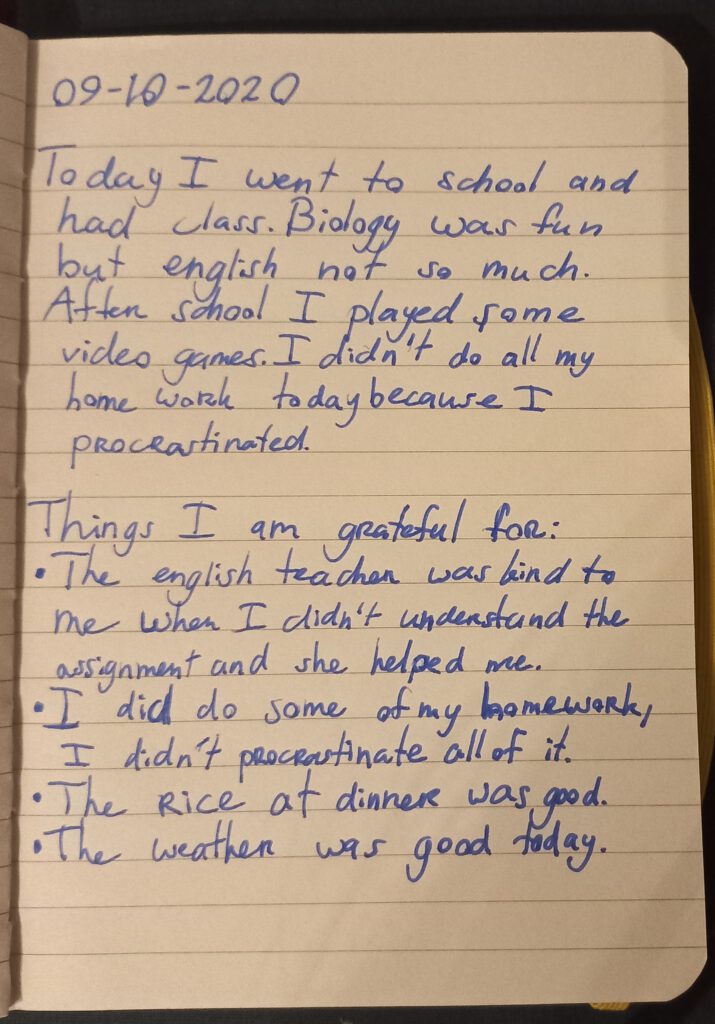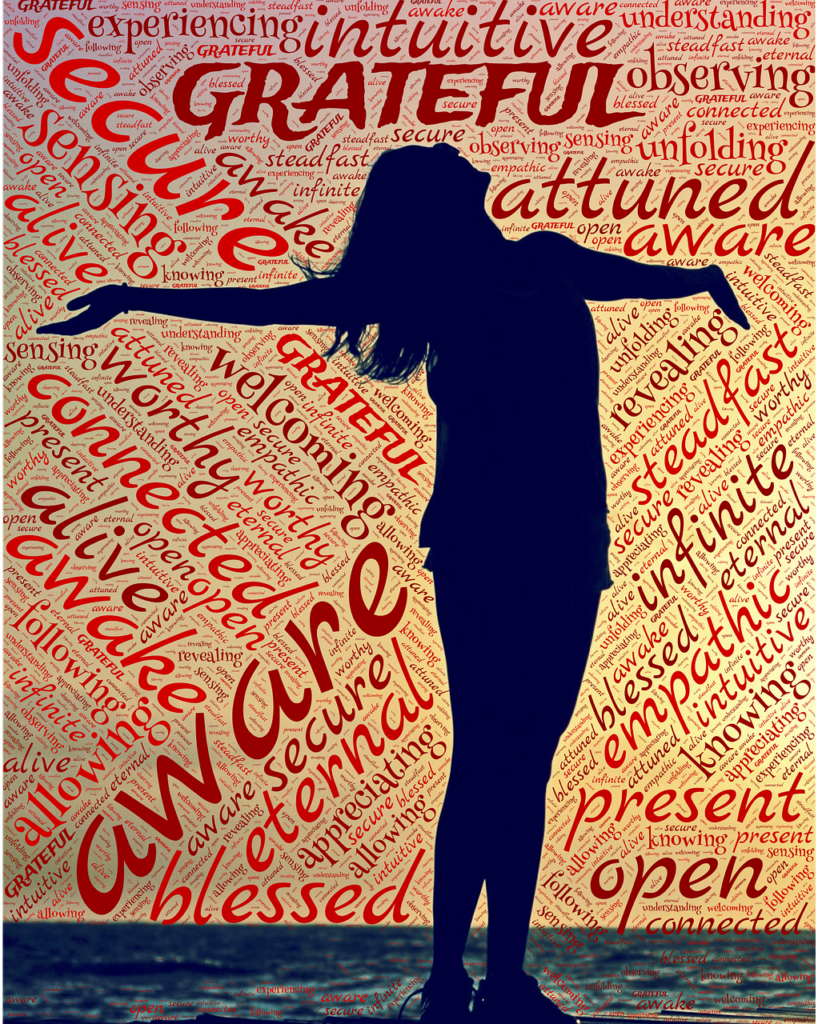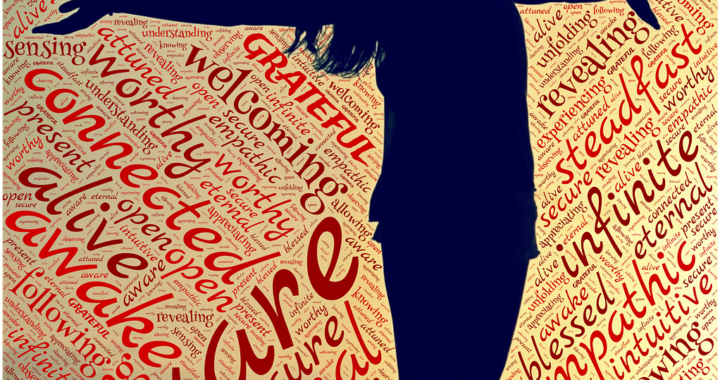Gratitude journaling
Gratitude journaling is an exercise in which someone writes down things that they grateful for daily. It is simple and only requires pen and paper, yet can lessen the need to daydream over time.
How can gratitude journaling help me?
Do you see yourself avoiding reality by daydreaming? A common reason to daydream for people who daydream maladaptively to avoiding negative emotions (see info page) (Somer, 2002). Sadly daydreaming often doesn’t lead to feeling better in real life afterwards(Wen et al., 2019). Gratitude journaling focusses on seeing real life in a positive light (next to a negative one). Instead of only trying to reduce negative emotions, it mainly aims to give you more positive ones and to give someone a higher life satisfaction (Cunha et al., 2019). By gratitude journaling, you slowly get to appreciate real life more and the need to avoid reality will become less strong. Plus, it is proven to also make people happier in life!
Exercise
For this exercise you only need pen and paper. It is recommended to use a notebook or journal since you are going to have to write things down daily. This way you have more space to write things and you can look back on what your wrote in the past.
At the end of each day, write down the day on the top of the page and write down what happened that day. Under that, write at least three things that you were grateful for that day. It can be something as small as a coffee that tasted good or maybe something bigger like a compliment you got that day. It can be anything, as long as it made you happy that day. For an example, see the image below:

Optional: If you notice you are becoming better at thinking of things you were grateful for, you could skip writing down what happened that day. If you like an extra challenge, you also write down things that you are grateful for in life.
Pro tip: If you sense thoughts coming up, know that is completely normal. Instead of focusing on these thoughts, try to slowly turn your attention back to your body. See your thoughts as passings cars on a road. You can see them passing by, but you don’t engage with them. Accept that your thoughts are there and then decide to slowly turn your attention towards your body again. You will see that slowly, you will become better at keeping your attention to your body, even with thoughts and feelings in the background.

In conclusion, this exercise has two goals
- To make you more aware of the present so you learn to feel and accept real life better.
- To teach you to accept and your own thoughts and emotions as they are and to be less judgmental towards them.
Sources:
Cunha, L. F., Pellanda, L. C., & Reppold, C. T. (2019). Positive Psychology and Gratitude interventions: a randomized clinical trial. Frontiers in Psychology, 10. Geraadpleegd op 6 september 2023, van https://doi.org/10.3389/fpsyg.2019.00584
Somer, E. (2002). Maladaptive Daydreaming: A Qualitative Inquiry. Journal of Contemporary Psychotherapy, 32(2):197-212. Geraadpleegd op 6 september 2023, van https://doi.org/10.1023/A:1020597026919
Wen, H., Soffer-Dudek, N., & Somer, E. (2021). Daily feelings and the affective valence of daydreams in maladaptive daydreaming: A longitudinal analysis. Psychology of Consciousness: Theory, Research, and Practice. Geraadpleegd op 6 september 2023, van https://doi.org/10.1037/cns0000293

